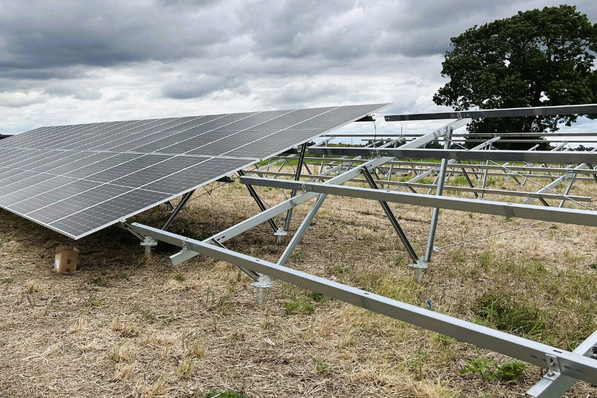It sounds like static, like a waterfall or crashing surf. That is how Urs Mügli (not his real name) describes the interference in his headphones: "Sometime three years ago I noticed the interference," he recalls. "Whenever the sun was shining, it was more clearly audible. At sunset, it shifted to higher frequencies."
Mügli lives in a town in eastern Switzerland. He is a ham radio operator, and the interference was hard to ignore with his 30-watt transmitter. "Using a homing device for the 80-metre band, I found out that it had to be a neighbour's solar system." In June 2017 he informed his neighbour about the problems.
54 HIT modules with Tigo optimisers
The neighbour's name is Jochen Freisinn (also not his real name), a pioneer of the solar energy transition in Switzerland. It has three strings on the roof and one string as a perimeter terrace system with a module field on the facade. A total of 54 Panasonic HIT modules, totalling 12 kilowatts of output, connected to a Solarmax inverter via Tigo DC optimisers. "The optimisers actually ran optimally," confirms Freisinn. "But suddenly we had this interference with the radio signals."
Freisinn, himself very fond of technology and supported in an exemplary manner by his solar technician, set out to find the causes. In May 2018, a measurement vehicle of the Swiss Federal Office of Communications (Bakom) drove onto the premises. Result: Interference in four radio bands, at 3.5 megahertz, 11 megahertz, 14 and 18 megahertz, at intervals of 50 kilohertz each. The authorities set a deadline for the operator: He had to remedy the interference by March 2019.
See also:
"Power adapters and PLC may interfere"
Freisinn then turned to Tigo, as the Bakom pointed out to him already known incidents with DC optimisers. Annother possibility was that the inverter could radiate into the DC string via the MPPT inputs.
Service denied
The manufacturer of the DC optimisers is the US company Tigo Energy. These optimisers are designed to interact with almost all inverters. Communication takes place via a radio system, i.e. not via Powerline as in the case of SolarEdge. This means: Each optimiser acts like a small radio beacon on the roof.
Tigo has a service team in Italy and one service technician in Germany. Initially, the manufacturer provided information to support the customer. When it became clear that the matter was going to be delicate and above all costly, they broke off all contact.
In the spring of 2019, the editorial team of photovoltaik contacted the marketing department of Tigo in California. The result was a discussion at Intersolar 2019 in which Tigo CEO Zvi Alon, the system operator, his installer and the author of this article took part.
In Part 2, you will find out what happened as a result of that meeting and how the situation has progressed since then.







